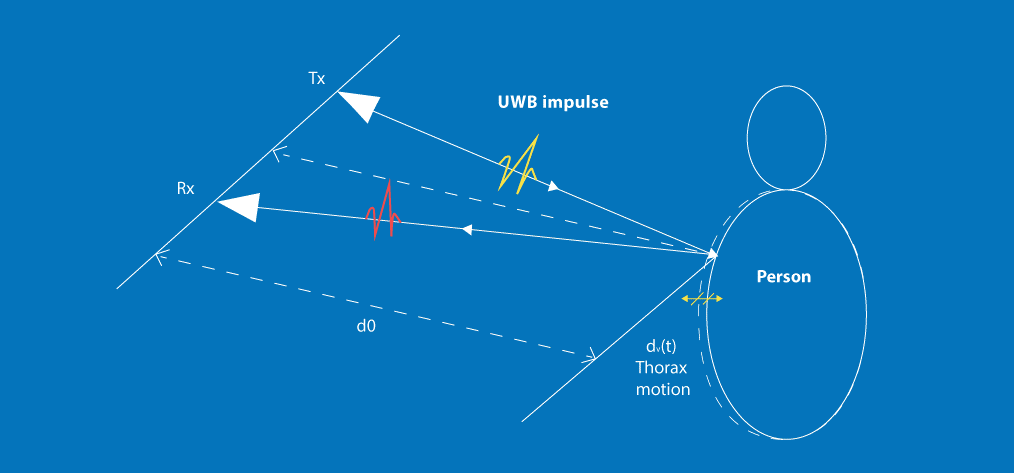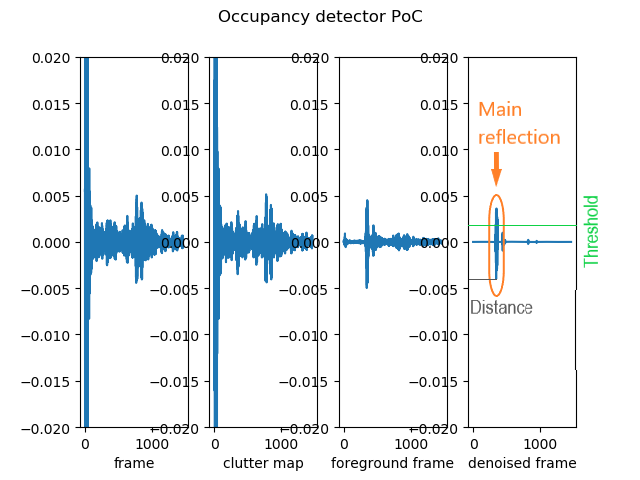The concept of UWB radar sensor
The key concept of the radar sensors is to send out signals and then receive signals reflected by objects. The IR-UWB sensor (pulse radar ultra-wideband) – as we use it – sends short-term pulses, whereby the duration of a single pulse is usually in the order of a few nanoseconds to a few hundred picoseconds [1]. Such a signal has a number of desirable properties such as fine resolution, good penetration, multi-path immunity. IR-UWB radar sensors are extremely precise and use little electricity.

Occupancy detection - how did we do it?

How do you implement a radar-based system with AI?
RF data received from the sensor is a set of consecutive 1-dimensional signal frames. Each frame corresponds to reflections at a discrete moment, while events such as traps or fainting spells last longer. As a solution, we suggest stacking the sequence of consecutive frames into a 2-dimensional matrix that contains information about a selected time period. The advantage of this approach is that the resulting matrix can be treated like an image so that we can take advantage of the Convolutional Neural Networks (CNNs) [6].
With Edge AI devices like NVIDIA Jetson, we can use our neural network development and training expertise to implement a solution tailored to your needs. By using the edge AI devices, calculations can be carried out anywhere. This means you can use radar-based AI solutions for intelligent buildings, security, healthcare or retail without having to transfer data. This means full respect for user privacy and full compliance with the GDPR.
1 Xuba Wang, Anh Dinh and Daniel Teng, Radar Sensing Using Ultra Wideband – Design and Implementation, 2012, http://dx.doi.org/10.5772/48587
2 X4 – Datasheet , Xethru Datasheet by Novelda, 2020
3 Piccardi M., Background subtraction techniques: a review in Systems, Man and Cybernetics, 2004
4 Burrus, C. S. and R. A. Gopinath, H. Guo. INTRODUCTION TO WAVELETS AND WAVELET TRANSFORMS, A PRIMER. Upper Saddle River, NJ (USA): Prentice Hall, 1998
5 X4M300 Datasheet, Xethru Datasheet by Novelda, 2017
6 Xiuzhu Yang, Wenfeng Yin, Lin Zhang, People Counting Based on CNN Using IR-UWB Radar, 2017
You have an idea on how AI can support your business or you have a question about the UWB radar sensor? – Contact us.





